Denmark
early 19. c.
Denmark
mid 19. c.
Denmark
mid 19. c.
Norway
early 20. c.
Holland
ca. 2000
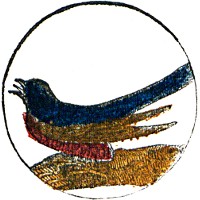
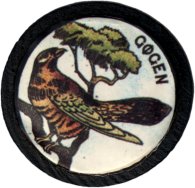


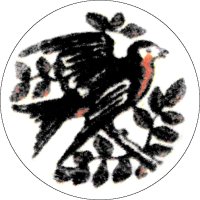

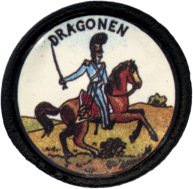


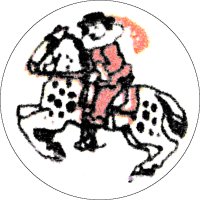
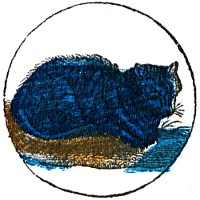




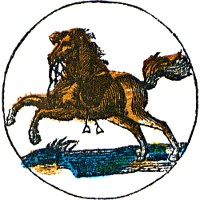




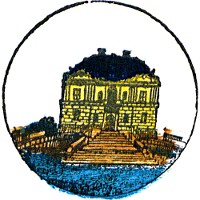
































































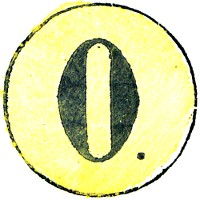




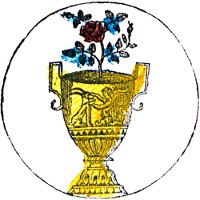

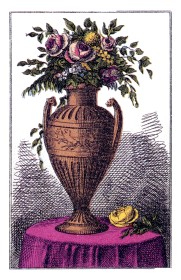

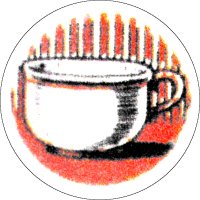
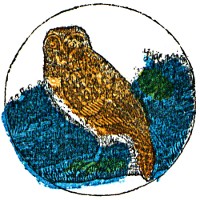



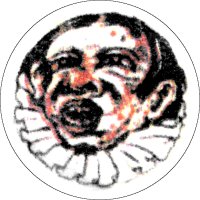
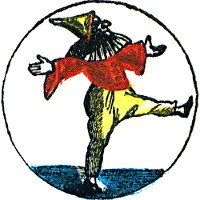



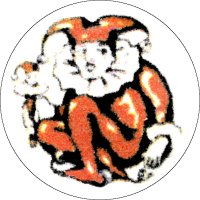
The version of the game found in Denmark and Norway surprisingly takes it name from the cat card, which in Italian bears the legend gnao, the sound of a cat. As the vowel combination ao does not exist in Danish, the spelling was changed to gnav (in Danish, v may be semivocalic like English w, while in Norwegian it is a pure consonant). Another name for this game is vekselspil meaning exchanging game, a translation from the Italian word Cambio meaning change or exchange. As for the Swedish variant, this Italian word and variations of it was probably once used as a name for the game. In old rules, the exchanging action is described with a verb at kampere derived from this name, which is in other contexts not used in any similar meaning neither in Danish nor in Norwegian.
It is said that in order to circumvent a ban on playing cards by the despotic pietist king Christian VI in the mid eighteenth century, gnav cards were replaced by wooden pieces with a printed circular emblem. However, the Italian precursor game already existed as both cards and wooden pawns long before this. Later Gnav cards often have designs derived from the circular versions used on the wooden pieces rather than designs utilising the full cards. The wooden piece version has a descendant in the Dutch Slabberjan found on the island of Walcheren in Zealand. Its version of the lowest card when disregarding the fool has not gone through the transformation to an owl like all extant versions of Gnav, and must for that reason be assumed to have branched off at a very early point.
| Gnav pieces Denmark early 19. c. |
Gnav pieces Denmark mid 19. c. |
Gnav cards Denmark mid 19. c. |
Gnav cards Norway early 20. c. |
Slabberjan Holland ca. 2000 |
|
|---|---|---|---|---|---|
 |
 |
 |
 |
 |
|
 |
 |
 |
 |
 |
|
 |
 |
 |
 |
 |
|
 |
 |
 |
 |
 |
|
 |
 |
 |
 |
 |
|
 |
 |
 |
 |
 |
|
 |
 |
 |
 |
 |
|
 |
 |
 |
 |
 |
|
 |
 |
 |
 |
 |
|
 |
 |
 |
 |
 |
|
 |
 |
 |
 |
 |
|
 |
 |
 |
 |
 |
|
 |
 |
 |
 |
 |
|
 |
 |
 |
 |
 |
|
 |
 |
 |
 |
 |
|
 |
 |
 |
 |
 |
|
 |
 |
 |
 |
 |
|
 |
 |
 |
 |
 |
|
 |
 |
 |
 |
 |
|
 |
 |
 |
 |
 |
|
 |
 |
 |
 |
 |
There is a bit of variation in two of the subjects. The reflex of the Italian secchio (bucket) remains a bucket in some designs, but mostly takes the form either of a flowerpot or an ornate urn or vase with flowers in it. When named, the sucject is called potten (the pot). This word might refer to a flowerpot, but in unmarked use this is more readily interpreted as a chamber pot (at least today; this could have been subtly different at the time of origin), and some sets do contain designs that seem to represent such an interpretation. In the Dutch Slabberjan the piece depicts a chamber pot and the name pispot reflects this. In the Swedish Kille cards, it is always an elaborate urn with flowers, and called blompottan (the flower pot) when named.
The reflex of the Italian nulla (zero) is mostly represented by the Arabic number zero, both when Roman numerals are used for 1–12 as is most common and when Arabic numerals are used. When numbers and other subjects are treated differently visually, it is grouped with the numbers. Some sets instead have a a finger ring, which might be named like the non-numeric subjects, but treated as a number if there is a visual distinction. This might be seen as a parallel to the Swedish Kille cards, where the reflex of nulla is a flower wreath, and is mostly unnamed even in sets where all other non-numeric subjects are named. Supporting such a link is a set where this subject is explicitly named ringen (the ring), where the second highest trump normally named dragonen (the dragoon) is instead named husaren (the hussar) like the corresponding subject in Kille.